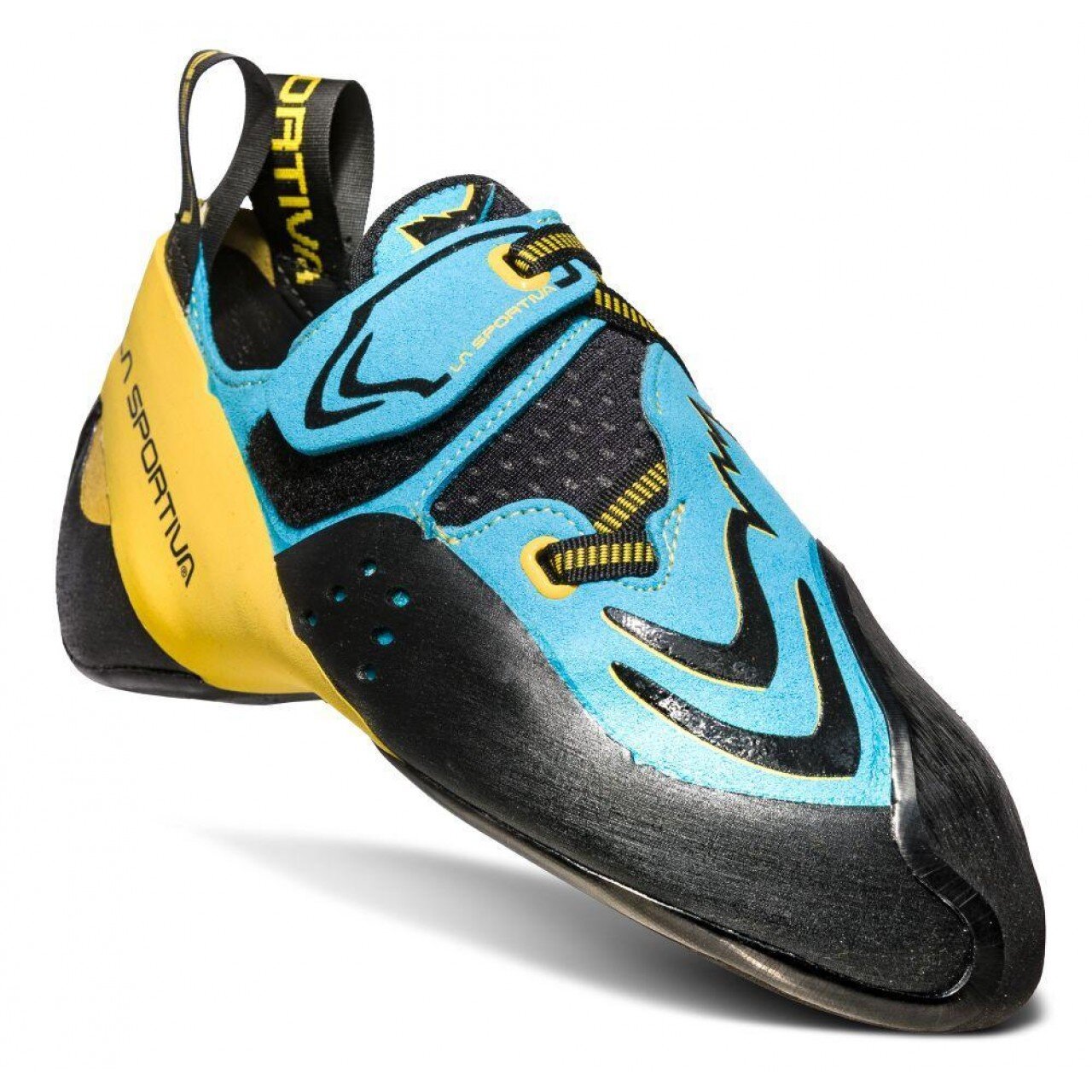How No-Edge technology works
The Progression of No-Edge Shoes
La Sportiva Mantra S, the original no-edge shoe
La Sportiva Speedster
La Sportiva Futura
La Sportiva Genius
No-Edge Technology
Espresso Note
Read Time - 4 minutes
April 2020
What is it? How does it work? Who’s it for?
No-Edge technology is a pretty funky concept which La Sportiva incorporate into three of their high performance shoes the Speedster, Futura and Genius models, as well as the Maverick a junior model. Boldrini have a similar, although not identical, concept they call ‘Full Contact Sole’, used on a number of their shoes.
Proto No-Edge tech first appeared around the turn of the millennium on the Mantra, however it didn’t last the course and was pulled due to lack of sales.
Today, No-Edge technology enjoys moderate popularity, and with good grounds to, but it is not for everyone.
The No-Edge design follows the natural profile of the foot, rather than having a defined edge at the front of the shoe. In place of a conventional edge, a thin layer of rubber is wrapped over the front of the shoe. This maintains a more constant volume throughout the shoe, allowing climbers to be in closer contact with the rock.
The three main advantages of No-Edge technology are:
The ability to apply more uniform pressure to footholds, due to the greater surface area of rubber.
Greater sensitivity, as the climber’s toes are closer to the rock.
Improved power transmission, thanks to the greater sensitivity and the ability to apply uniform pressure to footholds over a range of orientations.
Surprising comfort from such an asymmetrically lasted shoe. No-Edge technology allows for a slightly roomier toe box, and this is combined with a soft construction throughout.
All No-Edge shoes are built on a highly asymmetric downturned last. The Genius and the Speedster both use La Sportiva’s most aggressive last PD85, the same as the Testarossa. The Futura is slightly less asymmetric, using the PD75 last. Although, by a general climbing shoe standard, this is still very aggressive. All three shoes incorporate La Sportiva’s P3 rand as standard on performance Sportiva shoes, and use Vibram XS Grip2 rubber, Vibram’s softest stickiest compound. No-Edge shoes are leather, but backed with microfiber, a synthetic material. So, they will stretch a little, more than a fully synthetic shoe, but not as much as an all leather shoe.
In order to work, No-Edge shoes need to be sized tight. At least a half euro size down from other Sportiva models is advisable. For example, if you wear a 42 Skwama, a minimum size down to a 41.5 Genius would be advised. Sized too loosely, and the toes do not sit snug in the toe box, and the advantages of No-Edge technology are lost. Although the prospect of wearing aggressively downsized shoes with an already aggressive last doesn’t sound too appealing, No-Edge shoes are surprisingly comfortable considering this. Although for those looking to wear socks with their shoes, or for all day comfort, not wanting to remove their shoes between pitches or on belay, then chances are No-Edge shoes aren’t going to be a great fit for you, in every sense.
A well fitting No-Edge shoe excels on steep limestone, with polished footholds. And, counter intuitively on slabby terain with sloping or smeary holds, think La Pedriza or Ailefroide Granite padding, or Gritstone and Fell Sandstone slab problems. In both cases, this is due to the ability to apply consistent uniform pressure over a greater surface area and over a greater range of orientations. This also lends benefits to onsight climbing, where lack of rehearsal means you’re not using all the holds in their best way. For ambitious trad and sport climbers, No-Edge shoes are an onsighting secret weapon.
Providing that climbers use them on the right route. No-Edge really falls flat on crack climbs. The rounded toe is larger in profile than a conventionally edged shoe of the same size, and so using the toe well in constricting cracks or thin hands to fingers, and fingers to tips, is hard to say the least. This can also present a problem on pocketed climbs with small constricting pockets. Although, No-Edge can also work very well on shallow rounded pockets of the right size. The fact is, you can’t win ‘em all.
Probably the biggest detraction with no edge technology is the fit. In order to work well the shoes have to fit snug. However, the Speedster and the Genius are amongst the widest in the La Sportiva range. For many climbers, no matter how hard they crank their laces down, the Genius doesn’t quite fit as well as narrower shoes. Meanwhile for those with broader feet, the heel pocket on the Genius can feel shallow. In fact, it does work well enough, but this isn’t hugely confidence inspiring. However, it is is more sensitive than moulded ball heel on the Solutions. The Speedster and Futura, are especially soft, even for a soft split midsole shoe, and many climbers coming off conventional edged shoes will struggle to adapt. Climbing in Futuras or Speedsters even for a short while will make your toes stronger though!
Too many technical shoe terms? Read our Climbing Shoes Jargon buster.
Learnt something? Buy the No Thrills team a coffee to say thanks!





